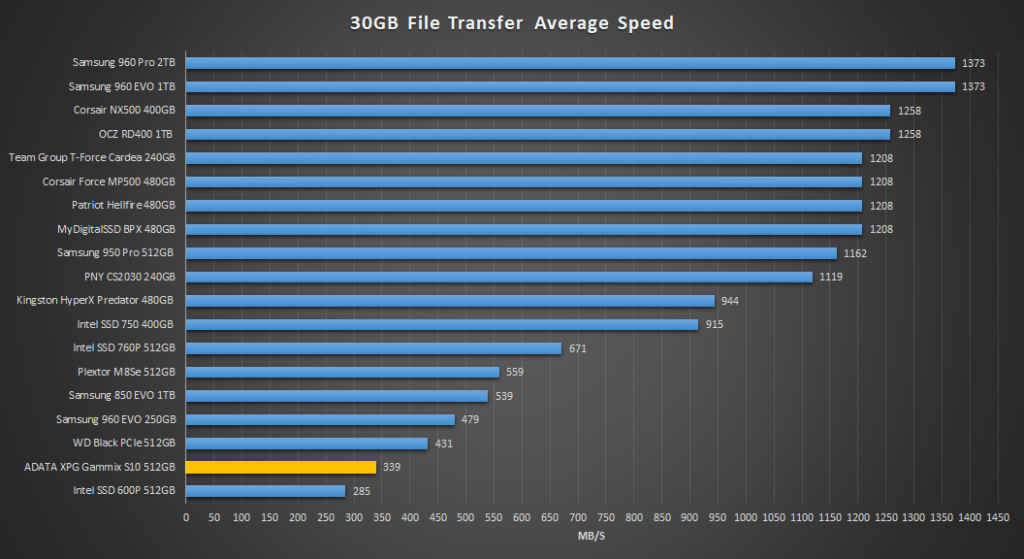REAL WORLD FILE TRANSFER
We also wanted to see how performance was in a real-world use when transferring large files to the SSD. For this test, we are going to simply stress write performance by transferring over a 30GB folder of movies off of a 512GB Samsung 950 Pro to the test SSDs and time how long it takes. Once complete we can calculate the average speed.
Like we saw during our PCMark 8 runs, the ADATA XPG Gammix S10’s faster write performance helps it to outshine the Intel 600P. With an average transfer speed of 339MB/s, however, it ranks second to last in our comparison and is even beat out by SATA based SSDs.
POWER CONSUMPTION
For our power consumption testing, we have the drive connected to the system as a secondary drive. To record the wattage, we are now utilizing a Quarch Technology Programmable Power Module. It allows us to accurately measure power consumption over time and is flexible enough to allow us to test any SSD that comes our way.
Our power analysis may change as time goes on, but for now, we are looking at just a few metrics with the main goal of measuring our results against the manufacturer’s ratings. Because most consumer systems are at idle for about 80% of the time, idle power consumption is an important measure to look at when understanding the efficiency of a drive.
First up we have our results with Active State Power Management disabled. As we can see, the Gammix S10 has an average idle power consumption of just under 1W.
In the chart above, with ASPM enabled, we can see that the Gammix S10 consumes 1/3 of the power, sipping 0.356W at idle. This result is still fairly high, especially when considering most SATA SSDs consume less than 100mW at idle with ASPM enabled.
POWER EFFICIENCY
Finally, we wanted to post up a graph of the power efficiency of the SSDs in write transfers. We are looking at MB/s per Watt in this graph. The higher the result, the better.
The chart above shows us just how efficient an SSD is in writing data. Here we can see that the Gammix S10 averages 81MB/s per watt. This result is just barely better than the Intel 600P and is less efficient than the SATA based Samsung 850 EVO 1TB.
 The SSD Review The Worlds Dedicated SSD Education and Review Resource |
The SSD Review The Worlds Dedicated SSD Education and Review Resource | 


Mr. Webster, thanks for the review as usual.
Man oh man, these are some rough benchmarks. A solid notch above the worst drive. In the 30GB transfer test it abysmally gives way to 850 EVO? I certainly agree with you, there is no way this is a device for “professionals”.